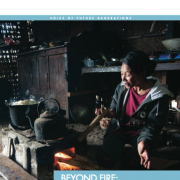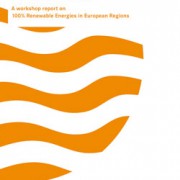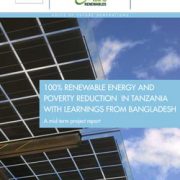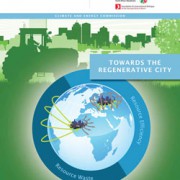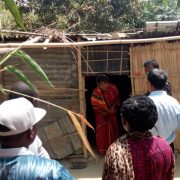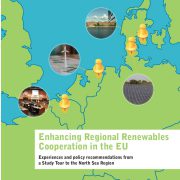Cities must be Regenerative. But what kind of Regeneration are we actually talking about?
It is not just about the regeneration of natural resources but it is also not just about what is commonly reffered as urban regeneration. As the term regenerative appears more and more within the international discourse on cities, clarity over its actual meaning is paramount.
The term ‘regenerative´ is becoming increasingly popular in the discussion around sustainable urban development and especially relevant now as it gets frequently mentioned within the UN discourse leading up to Habitat III. For example, the term has recently been re-adopted in the official document of the UN World Urban Campaign as one of the 10 final Principles of The City We Need 2.0. The 6th principle explicitly states that “The City We Need is Regenerative and resilient”. The terms is also mentioned several times throughout this document as well as in other UN preparatory documents towards Habitat III such as the final Policy Paper 8 Urban Ecology and Resilience.
But what does Regenerative actually mean?
While the ultimate aim of a regenerative city is to be able to regenerate the natural resources that it absorbs, it is important to highlight that the concept is in fact much broader and comprehensive. It is therefore important to clarify the types of Regeneration that we would see in the Regenerative City. In summary, we can say that the concept embraces 4 key types of regenerations, all extremely important for the effective implementation of the Regenerative City.
4 Fundamental Regenerations
- Regeneration of Resources (from Linear to Circular Flows)
Regenerative urban development seeks to mimic the circular metabolic systems found in nature. This will require a switch in paradigm away from the old linear metabolism (which allows cities to operate within an isolated segment of the resource cycle) to a new circular metabolism. This will mean closing the urban resource cycle by finding value in outputs that are conventionally regarded as waste and using them as resource inputs in local and regional production systems. For example, all the energy the city consumes needs to be able to be naturally regenerated by natural processes. For this reason, renewable energy is considered the only viable energy sources for regenerative cities, as it is continuously available and does not involve the consumption of a finite stock such as fossil fuels. Similarly all the material goods the city needs are not discarded into landfills but are kept in the resource loops by being upcycled, recycled, reused or by becoming a useful input in another processes such as energy production processes.
- Regeneration of Natural Capital and Urban Ecosystems (From Consuming to “Prosuming”)
The Regenerative city is not only conceived as a consuming entity, but actively contributes to the production of the resources it needs and to the restoration of the natural capital and ecosystems from which it depends. For example, food supplies are complemented through urban agriculture (including vertical agriculture), energy through solar rooftops, geothermal and bio-waste, and water through storm water collection at the block level and by allowing urban aquifers to be replenished through water percolation across the extensive green and permeable areas in and around the city. This enhanced ecosystem service infrastructure within the urban area improves the city’s self-sufficiency as well as its resilience. For example, increasingly relying on urban agriculture and on food from the immediate hinterland improves self-sufficiency while extensive greener areas provide benefits in terms of pollution mitigation, CO2 sequestration, water retention, natural filtering for cleaner urban aquifers, flood resilience etc. Similarly, relying on renewable energy sources from within the city or from the immediate surroundings increases the city’s resilience to energy prices fluctuation and dependency on imports. In addition, the regeneration of the productive capacity of the city and its ecosystems will lead to a renewed, enhanced relationship between cities and their hinterland and between urban and rural areas.
- Regeneration of Urban Spaces (from Sprawled to Dense)
Rather than sprawling and expanding on virgin land, regenerative urban development is about creating denser cities by redeveloping and regenerating the existing urban fabric and existing neighbourhoods (instead of simply developing new sites from scratch). Increasing density has in fact huge benefits in terms of efficient use of energy, resources, infrastructures and transport. At the same time, the focus of urban regeneration projects should be on making cities more people-centred, increasingly functional for the community, more accessible and inclusive and at the same time able to positively enhance the natural systems of the city and of the surrounding areas. Retrofitting and renovation projects are prioritized while at the same time historical and cultural heritage is also conserved and revalued. Enhancement of urban ecosystems is prioritized and it is achieved by making sure the city is rich of green areas and vegetation that, for example, help to block shortwave radiation, cool the ambient and create more comfortable urban microclimates. The latter can be highly beneficial, particularly given the risks of increase in temperature due to global warming. Improving urban ecology, promoting bioremediation of degraded areas and flora regeneration are also essential and have benefits beyond the environmental ones as they also increase the liveability and aesthetic value of the city.
- Regeneration of Communities (from Passive to Active Engagement)
Local communities and local businesses are themselves regenerated,revitalized and strengthened by becoming the actual leaders and drivers of all the regeneration projects taking place in the city. Citizens are constantly engaged and are encouraged to take part in the decision-making processes and community-based activities within the city. The informal sector, local youth and marginalized groups are also involved. For this purpose, it is crucial to establish a policy framework that promotes greater citizen participation, facilitates the processes of collaboration among stakeholders and of coordination across levels of governance and actively supports innovation and formation of new activities, locally based projects, start-ups and community initiatives. All of these processes contribute to the creation of a more dynamic, lively, people-centred and inclusive urban reality.
By Filippo Boselli, Policy Officer – Climate, Energy and Cities.


